If you’re looking for a feisty little feathery friend who packs a big attitude into a tiny package, then check out the Sebright chicken. These birds have been wowing backyard hobbyists and serious breeders alike since they first hit the scene over 150 years ago.
With their unique looks and lovable nature, it’s easy to see why folks can’t get enough of them. And don’t let their small size fool you – these birds have got heart (and plenty of personality) to spare.
Background and History of Sebrights
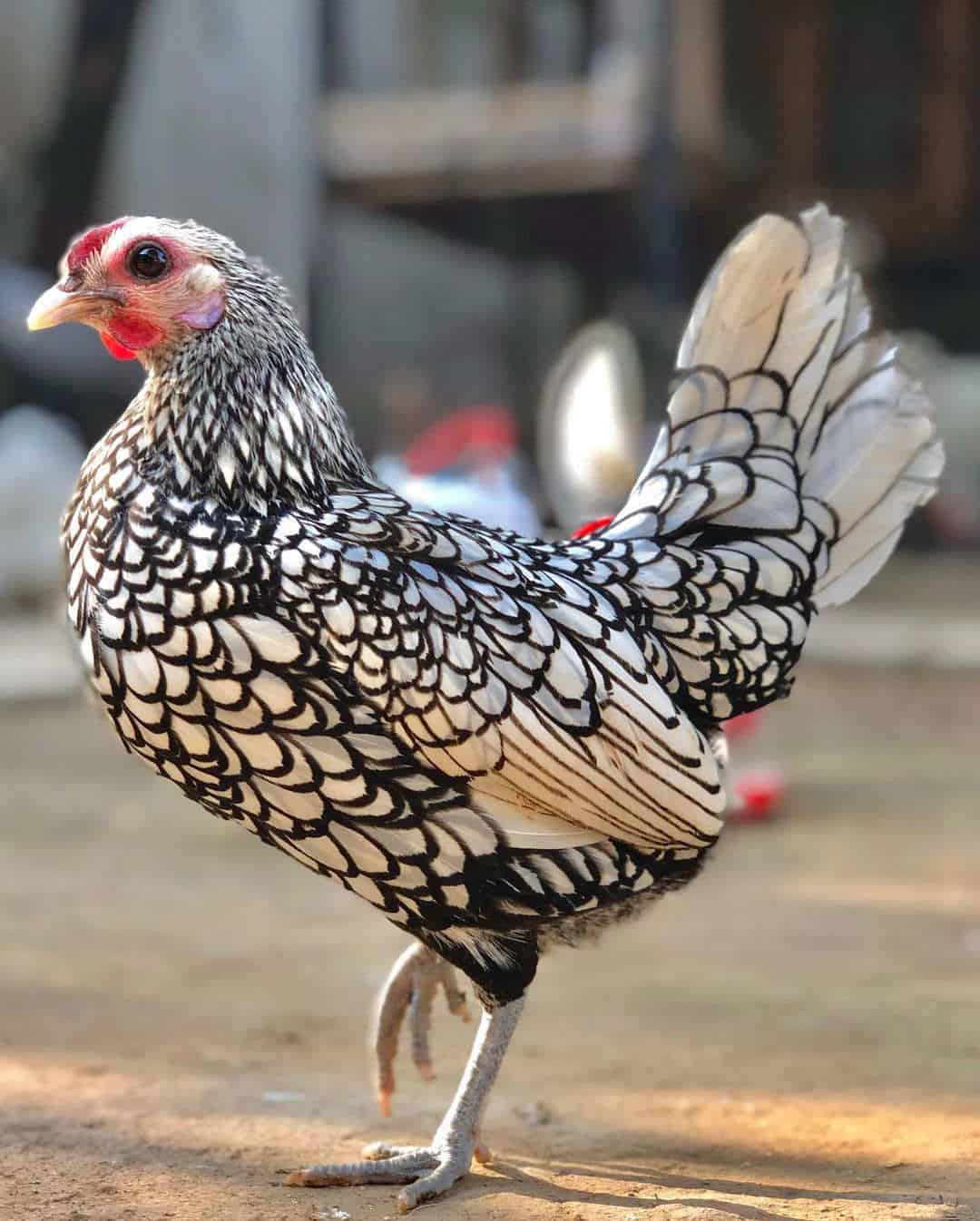
Designated as a true bantam breed, the small Sebright has no standard breed counterpart and was developed specifically as a bantam by Sir John Sebright, from whom the breed received its name. First bred in 1800, the Sebright is an attractive, ornamental breed of chicken, and is often regarded as one of the oldest varieties of British bantam.
It was Sebright’s intention to create a small chicken with distinct lace plumage, a feat that required substantial ingenuity and commitment on the part of the breeder to attain.
Although the exact cross-breeding subjects used to produce the Sebright are unknown, poultry experts highly suspect Nankin, Hamburg, Polish, and even Rosecomb breeds may have all been utilized in the development of the Sebright. Accepted into the American Poultry Association in 1874, the Sebright has been a steady fixture in the flashy world of poultry showmanship since that time.
However, because these birds are neither abundant egg layers nor large enough to be effective meat birds, the popularity of the Sebright has not extended much beyond that of professional poultry associations or of ornamental uses. Overall Sebright numbers are low enough to warrant the bird’s designation as “threatened” by the American Livestock Conservancy.
Currently, Sebrights are enjoying newfound popularity as the number of urban and backyard poultry enthusiasts increases. Undoubtedly, the active, spunky demeanor, small size and beautiful plumage of this bird are some of the factors that make this bird the perfect breed for first-time poultry owners.
However, because these birds tend to be difficult for beginning breeders to produce, the fate of the breed still rests squarely in the hands of professional breeders and poultry experts.
It is hoped that this renewed interest in a centuries-old breed, and the addition of chickens like the Sebright to small urban flocks, will bring about greater awareness for all manner of heritage poultry breeds.
Sebrights Breed Standard and Appearance

When it comes to size, Sebright chickens may not win any prizes for towering over the competition. But what these miniature marvels lack in heft, they make up for in sheer charm. With hens clocking in at just under 20 ounces and roosters coming in at a mere 22 ounces, these pocket rockets definitely know how to pack a lot of character into a tiny frame!
Speaking of frames, did I mention these chickens come in multiple color variations? Yep, that’s right! While Silver Laced and Gold Laced strains are recognized by the American Poultry Association, Buff Laced varieties of Sebrights also exist.
Regardless of color, all Sebrights have laced plumage that is edged in a contrasting black; like the sharp edge of a knife.
Because the males have no identifying or distinctive feathers in the hackle, saddle or tail, Sebrights are considered to be the only hen-feathered chicken, making males and females nearly indistinguishable by coloration.
Sporting a prominent breast and short back, Sebrights have large, downward sloping wings and a full tail that spreads out in a wide fan and is angled upwards carried approximately 70 degrees above horizontal. These chickens have combs that are a warm rose in color and which end in a straight, horizontal spike.
Sebrights might not look flashy, but they’ve got some great qualities going for them. For one, their wattles aren’t just boring old brown – nope, they’re bold, round, and colored a vibrant red. Plus, those ears aren’t just regular old ears either…no, sirree!
They sport turquoise or purplish-red lobes, quite the eye-catcher. And talkin’ about eyes, their faces give off a real pop of color – boys N girls alike both get treated to that lil’ boost of pizzazz. Even their legs (which go sans feathers) scream cool with that slate blue shade they’ve got workin’. All this together makes Sebrights a pretty sweet chicken to have around.
Personality and Temperament
Because of their intended purpose as an ornamental breed, Sebrights are generally friendly, active, and easygoing. Relatively simple to tame, Sebright roosters are not particularly aggressive, although both males and females of this breed tend to be somewhat skittish, a common trait among bantams.
However, once their initial shyness is overcome, Sebrights are found to be personable and responsive, with many owners asserting that these chickens can easily become pets with the right amount of training and owner interaction.
The Sebright’s engaging, feisty personality makes it an excellent chicken for competitions and shows, like these birds, when trained, respond well to the strains of showmanship and can typically handle the noise and bustle of the competition floor.
Although Sebrights may be affectionate birds, their active nature can lead them into trouble. Because of their large wings, Sebrights are reasonably strong fliers and may take flight when stressed or spooked, putting them out of the reach of their owners and into harm’s way.
Let me tell you something about Sebrights – these little birds can make quite a racket when they don’t like something! Like, have you ever seen one stuck in a noisy showroom? Like an elementary school class with no teacher. Ugh, not pretty. But hold up – before you think they’re just screamers, hear this out: They actually need our love and attention to keep calm. Yep, leave them alone, and they’ll go back to being noisy, wild babies again.
Sebright Chicken Egg Laying
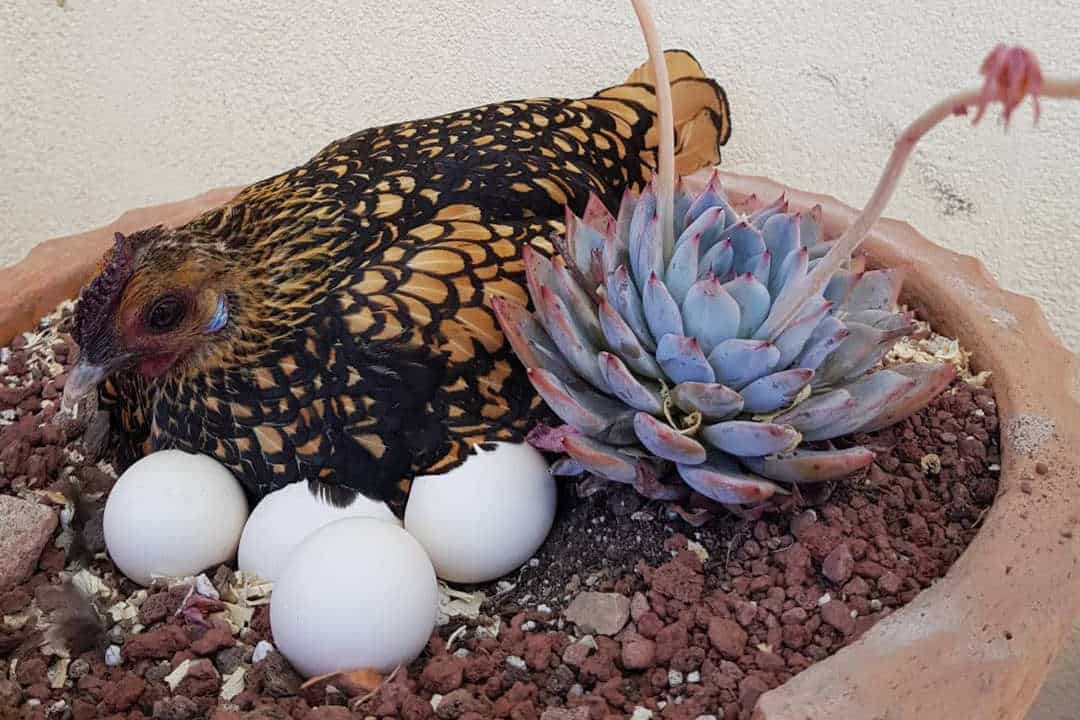
These little birds aren’t your typical egg-laying machines – they were made to look pretty, not crank out eggs like some kind of factory worker. But don’t worry; they still got something goin’ for them. They may only lay small white eggs, but boy, oh boy, do they look fancy! Just like diamonds wrapped up in feathers, if I say so myself.
Now here comes the fun part: trying to get them to breed. Good luck with that. Cocks like it warm and cozy, so springtime’s usually the best time (April through June). The problem is that hens aren’t into sitting on their little chicklings and fussing over them like mama hens. You might end up with a whole lot of empty nests and dead babies (pardon my French). Not cool.
On average, hens give us maybe 60-80 eggs a year. But heck, throw in a little hotter temp or better grub, and they might just surprise you and double down. Either way, you have to face facts: Sebrights weren’t designed for mass production. Sure, they shine bright like a gemstone, but when it comes to pumpin’ out eggs and cracking chicklings out of them, well, forget it. Just enjoy their good looks n’ leave it at that.
Health Issues and Care
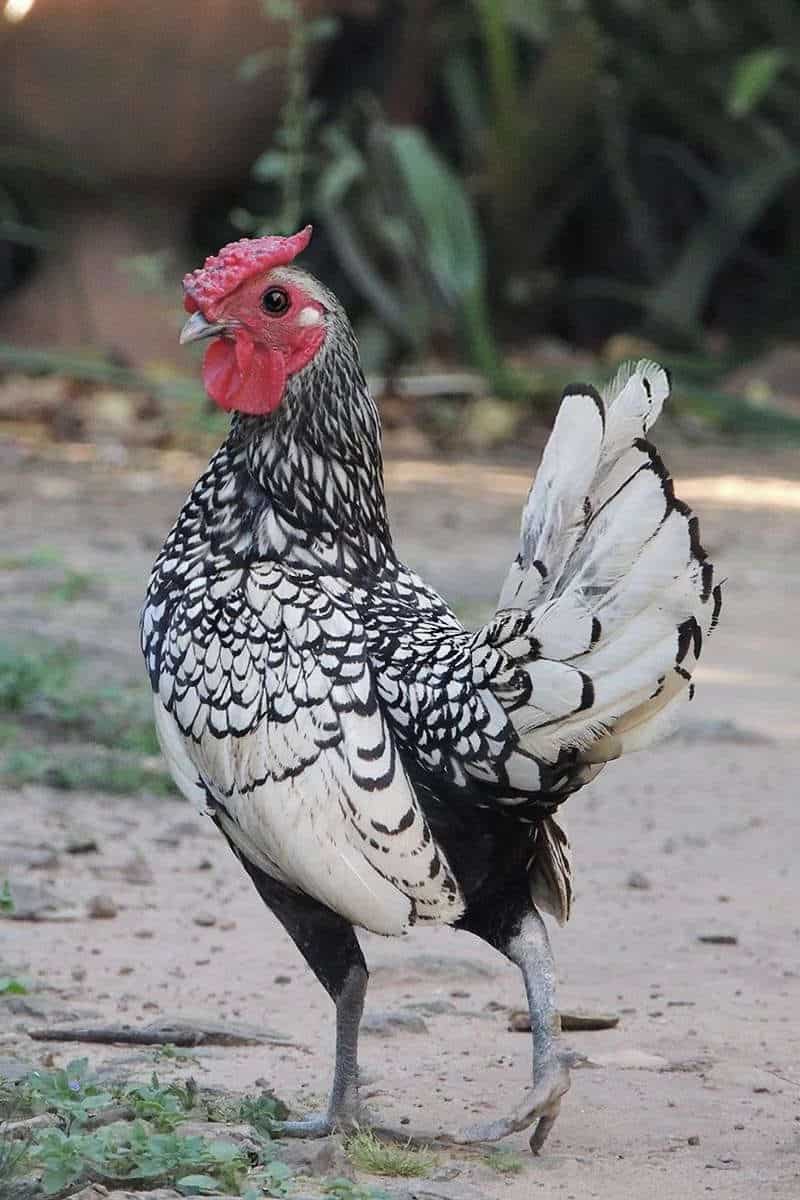
Hardy and active, the Sebright does not require much specialized care and can generally be kept with other chickens as long as enough space is provided. Great foragers, these chickens benefit greatly from opportunities to scratch around the yard and may find so much nourishment on their own that they may eat little of the feed provided.
However, the Sebright’s small body and large wing size also make them adept flyers, so all foraging sessions should be undertaken under supervision.
Additionally, the Sebright’s flight capabilities often require confinement; Sebrights should be kept in a cage or coop to ensure that they do not fly out of range when spooked or roost in tree branches out of reach. As social birds, Sebrights do well in confinement as long as they have companions.
Unfortunately, Sebrights are highly susceptible to Marek’s disease, a contagious viral neoplastic disease that infects the nerves and organs by way of the lymphatic system. Depending on the syndrome, Marek’s disease may cause eye color change and blindness, depression, paralysis, difficulties breathing, crop dilation, lesions, and death.
This disease is transmitted rapidly and can infect and decimate entire flocks. The only known preventative for Marek’s disease is vaccination, so it is essential to vaccinate the entire flock at the first sign of infection.
4 Tips for Raising Sebright Chickens
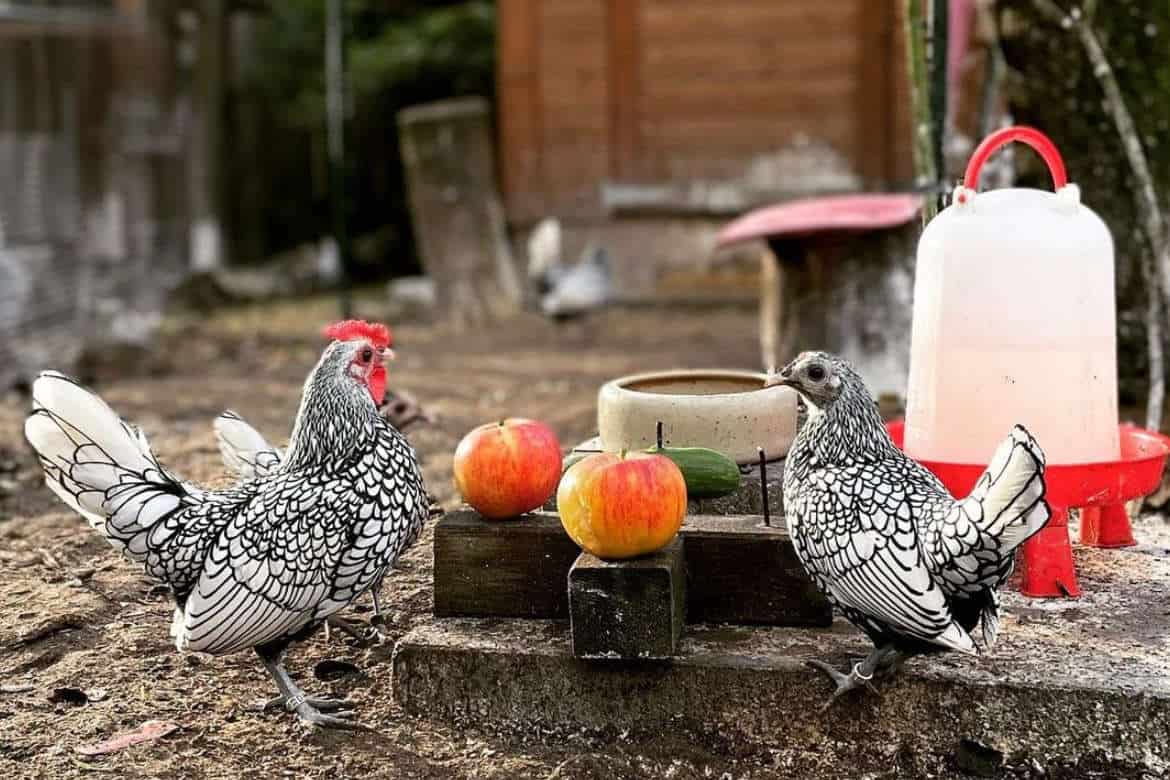
Interaction is Key
Let me share something with you about Sebrights! These lively little fellas might be shy at first glance, but with a bit of TLC, they transform from timid to sweet companion birds. To take them from shrinking violet to BFF status, simply spend plenty of quality time together playing peek-a-whoop, nibbling on snacks, and sharing cuddles.
Who knows? Maybe even your fave furball will join forces making this trio an inseparable threesome. After all, who wouldn’t want to live life alongside two adorable critters? Oh yeah, baby, Sebrights rock, so hop to it and start bonding.
Cages are Best
While some chickens may be easy to find and collect at the end of a free-range day, Sebrights may not be, as their small size and relatively large wings allow them to fly longer distances and roost in high branches than larger, heavier breeds. As smaller birds, they can spook easily, causing them to take flight in a moment of stress and putting them far out of their owner’s reach.
To keep Sebrights safe from harm, a cage or coop is the best option. However, they love to forage, so indulge their naturally curious nature by allowing them to scratch around the yard under direct supervision.
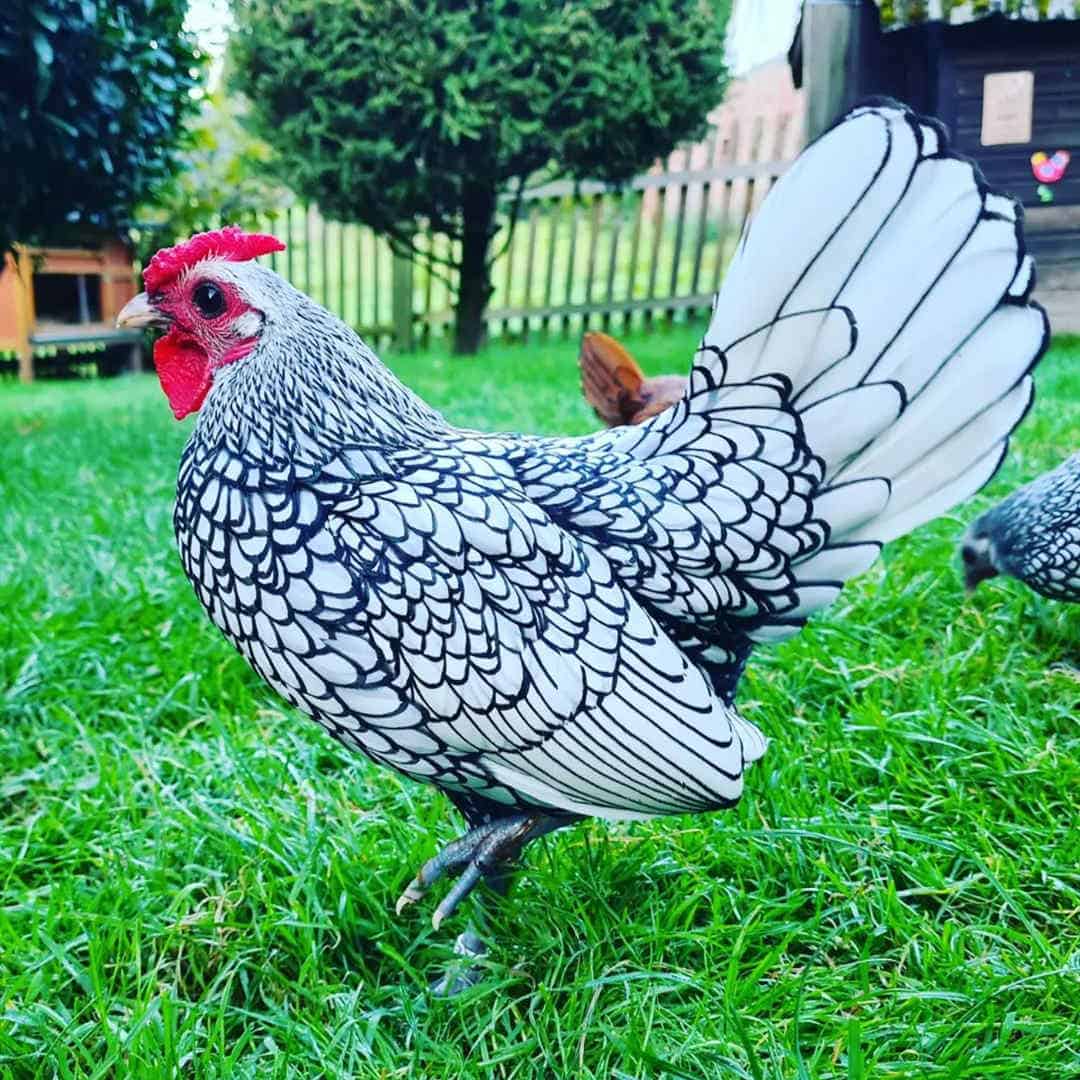
Don’t Expect Eggs
If you’re looking for a chicken to provide yummy eggs day after day, well, let’s face it, Sebrights ain’t going to cut it. Don’t get me wrong now; they’re definitely cute as buttons with their teeny stature, flashy tail feathers & peppy demeanor. The problem is, they were specially bred for the show, so forget about getting a ton of eggs. In fact, these guys barely crack open enough to feed themselves.
So why keep them around? Well, if you ask me, their charm factor totally compensates for their lackluster egg production. Just imagine – A lovely lawn accessory AND a great comrade… sounds like a win-win situation to me.
Enjoy the Show
Sebrights were born and bred to be ornamental, so their only true purpose in life is to be attractive and entertaining. Their distinctive plumage, diminutive size, and large personalities are all a part of their charm — so enjoy it!
These chickens aren’t particularly good producers and they don’t make for good eating, but they can liven up any farm or garden with their good looks and winning personalities.
Summary
These miniature marvels are proof positive that good things come in small packages. And hey, if you ever do need to harvest a few eggs or tend to a scratched wing, well, that just means you’ve got one more excuse to cuddle up close and bond even further with your flock. (Wink wink.)
So next time someone gives you grief over your choice to keep Sebrights, just give them a grin and remind them: “Don’t knock it till you try it.” Trust me, once you experience the joy of owning one of these bantams yourself, you’ll never want another breed again.

Joseph Hudson has been raising chickens for over 15 years. In 2018, he completed the Agriculture & Natural Resources program at Mt. San Antonio College. He currently raises over 1400 chickens on his 7.5-hectare farm. He keeps sharing his experience on raising healthy and happy chickens on Chicken Scratch The Foundry.
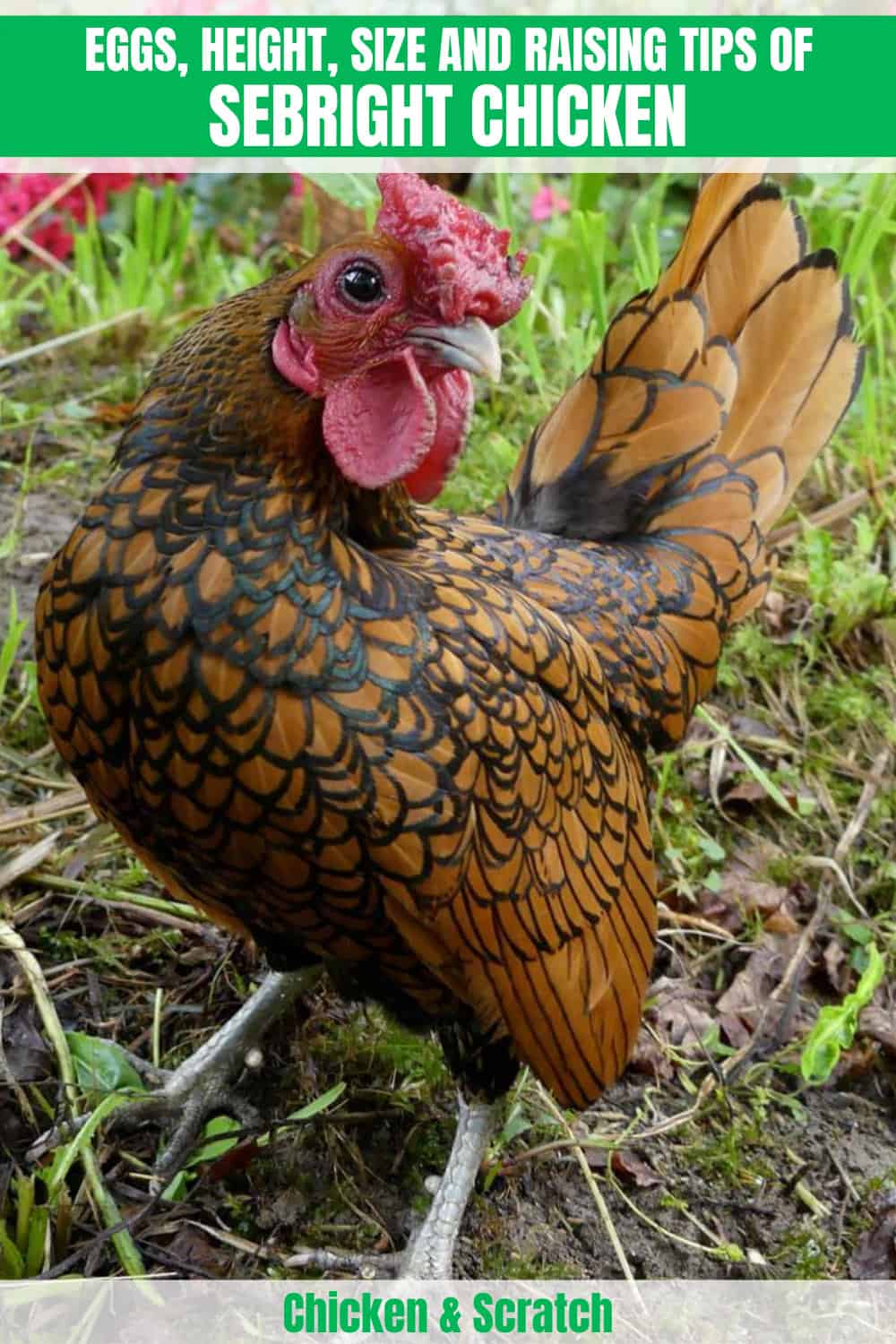







Such pretty birds! WE GOT 11 ACRES free. Lots of space for foraging , got experience in training adults bantams and chicks alike. I think I’m getting myself some.